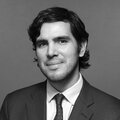Cross-posted from the New York Daily News.
Political groups and activist movements have long attracted the attention of the NYPD. But as the police rapidly build up their surveillance technology, new risks to First Amendment rights are arising.
To safeguard New Yorkers’ constitutional rights, the public and the City Council should at least be given basic information about intrusive new technologies before they are used. Only then would it be possible to have an informed debate about the risks and rewards of these tools.
Recently, a lawsuit revealed that police were watching Black Lives Matter activists on Twitter, potentially using software from a firm called Dataminr. Activists also claim that police used Stingrays — which force all cell phones within a certain radius to connect to a police-controlled device rather than a cell phone tower — to tamper with or collect information from protestors’ phones.
The rules governing the department’s surveillance of political activity are set out in a 1985 consent decree called the Handschu Guidelines, which was triggered by surveillance of civil rights, anti-war and gay-rights activists.
The guidelines were gutted at the request of the police after the 9/11 attacks, although in 2017 some safeguards were added back in as part of the settlement of lawsuits challenging the NYPD’s dragnet surveillance of Muslims.
Critically, a civilian now sits on the committee that reviews investigations of political activities to ensure that they are well-founded and don’t become fishing expeditions.
The civilian representative’s first report, issued in 2018, contains no suggestion that the committee reviewed investigations of BLM. This may be a question of timing, but the NYPD may also have found ways around the guidelines.
The Intelligence Division is the only NYPD unit allowed to conduct investigations of political activity, although police officers can of course report “suspicious conduct which involves political activity” and carry out their responsibility for preserving “peace and public safety.” These provisions may have been misused to develop parallel lines of inquiry outside the framework for investigating political activity.
The Handschu Guidelines also allow the NYPD to undertake social media monitoring with few controls. Officers can conduct “general topical research,” including “online searches and accessing online sites and forums.” The NYPD could have used this authority to monitor hashtags of political movements, gathering information on their views and meetings, and even tracking individual activists online. As the Supreme Court has recognized, new tools that piece together even public information may violate our privacy rights and threaten free speech.
Police use of Stingrays is subject to even fewer restrictions. The NYPD appear to have used Stingrays more than 1,000 times between 2008 and 2015, without even a written policy. Recognizing the invasive nature of Stingrays, in 2017 a Brooklyn judge concluded that the police needed a warrant before using them.
Like social media monitoring, Stingrays sweep far more broadly than those targeted, capturing information about everyone in the vicinity of the device. This information is likely stored in NYPD databases for years on end.
The civilian representative should investigate police surveillance of BLM. And to address the broader issue of surveillance technology and the full range of tools that the NYPD has its disposal, which include facial recognition and predictive software as well as the Stingrays and data mining at issue in these cases, the City Council should enact the POST Act, re-introduced by Council Member Vanessa Gibson last year. It requires the NYPD to publish basic information about its surveillance tools and their potential privacy impact. Let’s at least understand which rights we’re being asked to hand over.




